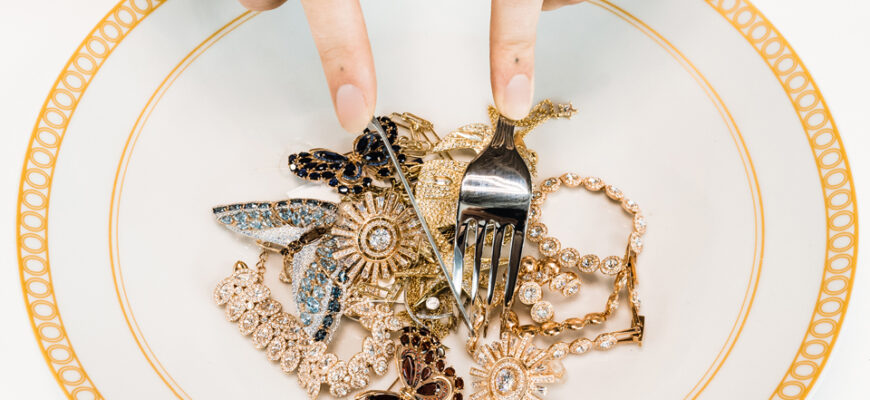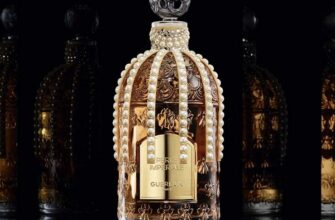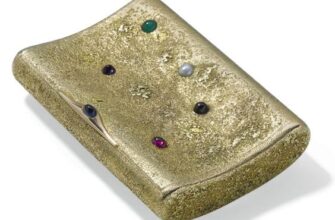Ethical, organic, "green" - such epithets applied to the word "jewelry" can be heard more and more often at jewelry exhibitions and in fashion magazines. Obviously, since safe (both for humans and for the environment) production is considered a relatively new phenomenon, then, alas, it was not such before. A century ago, in order to create the perfect jewelry, jewelers could pay with their health and even life. What poisons have the industry and its products been harboring for a long time? What damage can they cause to humans and the environment? And also what are ethical metals and technologies? – read in our special material.
The other side of precious metal mining

Gold mining is one of the most complex and dangerous types of jewelry industry, which for many centuries had a negative impact not only on the health of workers in the industry, but also on the state of the environment.
According to experts, about 20 tons (!!!) of toxic waste are a by-product of the extraction of raw materials for the manufacture of even a small piece of jewelry. The problem is aggravated by the fact that for a long time the extraction of precious metals was concentrated in the hands of large international concerns that developed mines in countries with zero environmental protection.
The most toxic substances released during the extraction of precious metals are mercury and cyanide. And if amalgamation (the method of extracting metals from ores by dissolving in mercury) is practically abandoned today, the extraction of gold by cyanidation continues in part.
What is cyanide and why is it dangerous?
Cyanide is a chemical substance that is a salt of hydrocyanic acid, which is widely used in many industries. In mining, for example, it has been used for more than a hundred years.
In large quantities, cyanide is toxic. It leads to suffocation, and without proper first aid - to death. Fortunately, metal cyanide handling around the world today has become strictly controlled by the relevant authorities. However, for a long time, the ethical nuances of this area did not interest anyone at all.
Avoiding cyanide
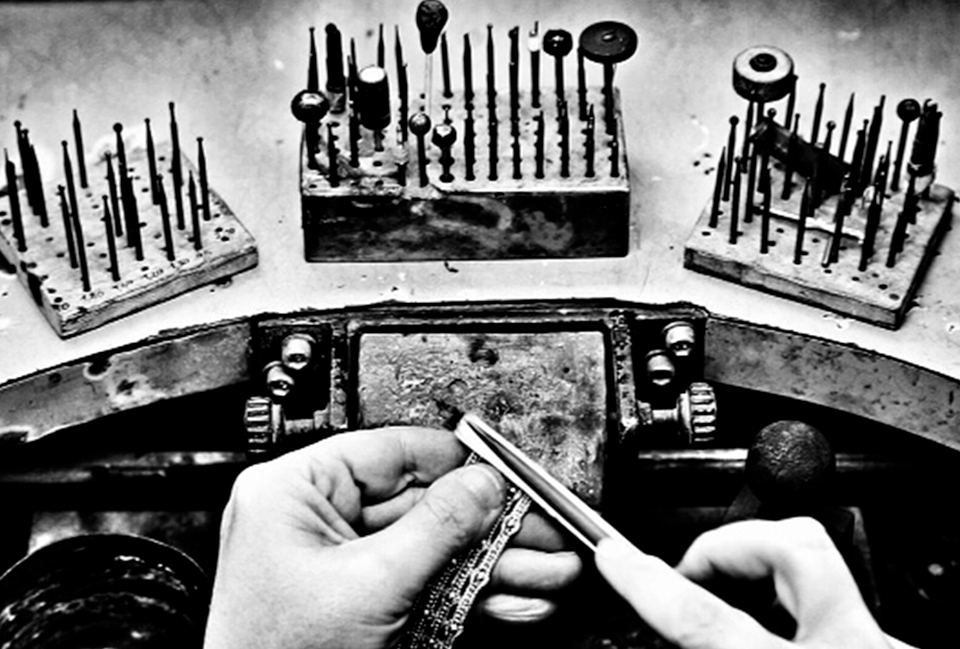
For all its toxicity, cyanide has long been an indispensable substance used in jewelry electroplating - the technology of coating jewelry. And all because the best properties are coatings made of gold, silver and their alloys, obtained precisely from cyanide electrolytes.
Such electrolytes were actively used in the Soviet years. Many galvanizers and industry employees undermined their health in the name of jewelry beauty, because during galvanization harmful substances are released that adversely affect the body and affect the condition of the mucous membranes, internal organs and skin.
They began to fight against toxic technologies, by developing, if not immediately ideal, but subsequently brought to mind without cyanide electrolytes.
In fact, despite its toxicity, when properly used, cyanide is relatively safe and practically does not harm the environment, the main thing is to minimize all risks when handling this chemical.
Consumers can also rest easy, because jewelry is now coated with a cyanide-free process, and the metals themselves are mined with more gentle methods.
The Dark Side of Heavy Metals

Other toxic components of the jewelry industry are compounds of heavy metals - antimony, arsenic and, especially, cadmium and lead.
In 2010, a scandal erupted: a fairly large amount of cadmium was found in children's jewelry sold in the huge American supermarkets Walmart and Claire's. As it turned out later, the toxic products were manufactured in China using cheap materials containing heavy metals. Of course, all these "jewels" were withdrawn from circulation, but the sediment remained with consumers.
The most toxic metals in jewelry making
Some of the most toxic metals in the jewelry industry are lead and cadmium.
Lead tends to accumulate in human tissues and lead to severe chronic diseases. Cadmium has a pronounced toxic effect on the internal organs, skeleton, reproductive system and embryonic development, promotes the development of cancer cells. Of course, the industry has long abandoned the compounds of these metals, but the question is: why did she need them at all? Why was it worth the risk?
The answer is simple. Both lead and cadmium have remarkable, even indispensable qualities - resistance to corrosion, excellent casting properties, ductility in processing ... For these excellent "personal characteristics" jewelers have been taking risks for decades, but today such production is an unaffordable "luxury". Large companies are not ready to spend money on endless litigation with injured employees, showdowns with the public and labor unions.
Dangerous metal allergen
Another metal whose presence in jewelry alloys is not welcome is nickel. Despite the fact that it has good anti-corrosion protection, hardness, toughness, resistance to high temperatures and can be perfectly polished, this metal can cause severe allergies in humans.
Ethical Metals
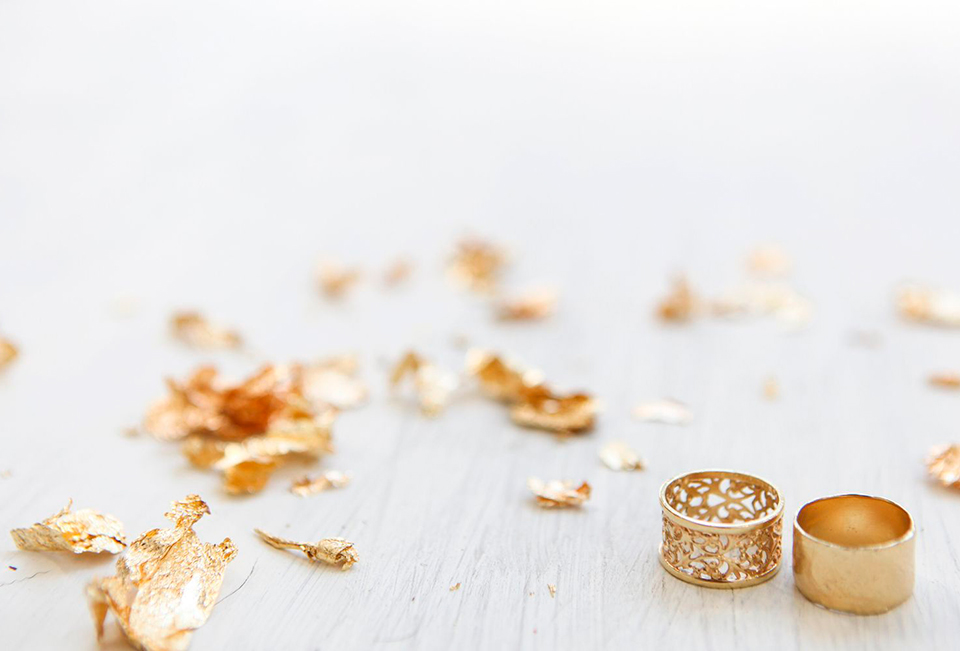
Since 2014, the phrase “ethical/ethical metal” has burst into the jewelry world. What does this term mean?
Ethical is a metal mined in accordance with all environmental standards, that is, using the lowest possible concentrations of harmful substances in industry.
Representatives of the Swiss jewelry brand Chopard spoke with the greatest activity about such production; since the summer of 2018, the company has completely switched to the use of "ethical gold" in its jewelry.
Once scientists risked their lives to discover a new element or technology, artists undermined their health with poisonous paints, creating what is now proudly called masterpieces. Often stories of great discoveries are dramatic, and the jewelry industry is no exception. But today, these sacrifices are not needed and the industry seems to have gone “on the path of correction”, where concern for the environment and people's health is the most important thing.
Jewelry technologies are becoming more ethical every year. The problems of the past are being rethought, and industry experts are doing their best to ensure that our relationship with jewelry is no longer toxic even by the gram!
